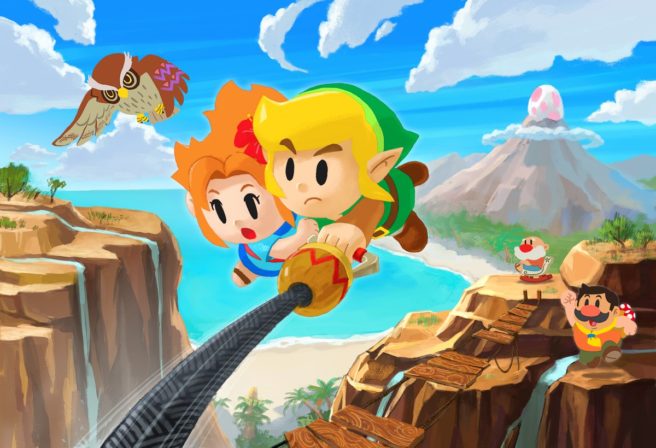Aonuma says Miyamoto asked him to include Mario Maker-like gameplay in Zelda, why Link’s Awakening doesn’t use analog input
Zelda series producer Eiji Aonuma has further discussed the origins of Chamber Dungeons in the Link’s Awakening remake on Switch.
In an interview with IGN, Aonuma noted that franchise creator Shigeru Miyamoto asked him to come up with a title that would feature Super Mario Maker-like gameplay. Chamber Dungeons were eventually imagined to keep things a bit simpler.
Aonuma’s full explanation:
“I talk to Mr. Miyamoto regularly about ‘the next Zelda game,’ and one time, he asked me if I could come up with a game that features Super Mario Maker-like gameplay, but for Zelda. We talked about how a game like this for Zelda would have dungeons, but it’s generally quite difficult to devise the logic needed to solve them.”
“So we gave some thought into a more approachable style of play where you have to think about how to arrange parts that already have a solution to create a single dungeon, instead of allowing players to create complex arrangements like in Super Mario Maker 2, and that’s how we created the Chamber Dungeons for this game.”
Aonuma also commented on how Link’s Awakening generally removes the screen transitions when moving about the world for a more seamless experience, though you’re still limited to eight directions rather than full analog movement since the team would have had to “redesign the gameplay itself”.
As Aonuma noted:
“The original The Legend of Zelda: Link’s Awakening game has the ‘Zelda scroll’ feature, where the map scrolls in single-screen units, which is a traditional part of 2D-Zelda games. But including a standard transition between screens as the player moves around makes it difficult to grasp how the layout of the map is connected, which caused people to get lost. So in the reimagining, we made it so that you can move around the world seamlessly. This removed the feeling of being blocked when playing the original, and helped make it more of a stress-free game to play.”
“Link, the playable character in the original, moved according to digital input in eight directions: up, down, left, right and diagonals, and the entire game was designed around that style of movement. If we were to completely replace that with analog input to allow free movement in all directions, we’d also need to redesign the gameplay itself, and the way the game feels and responds would be entirely different. So, taking into account that it’s now possible to move seamlessly around the map, what we did is keep the original movement in eight directions and made some adjustments to the game overall to make sure the feel and response don’t differ too much from the original.”
